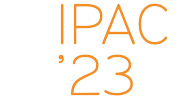Speaker
Description
X-ray beamlines—essential components of all synchrotron light sources—transport emitted radiation from the stored electron beam to an experimental station. One may describe the linear optics of the beamline via an ABCD matrix computed using a ray-tracing code. Furthermore, one may then include diffraction effects and arbitrary wavefront structure by using that same information in a Linear Canonical Transform (LCT) applied to the initial wavefront [1]. We describe our implementation of a Python-based LCT library for 2D synchrotron radiation wavefronts. We have thus far implemented the separable case and are implementing algorithms for the non-separable case. Our code base also includes rectangular apertures. We have tested our work against corresponding wavefront computations using the Synchrotron Radiation Workshop (SRW) code [2]. We present benchmark comparisons of LCT vs. SRW for both undulator and bending magnet sources of radiation. Finally, we describe our plans for extending this work to partially coherent radiation.
Footnotes
[1] SA Collins, J Opt Soc Amer, 60:1168 (1970). JJ Healy, MA Kutay, HM Ozaktas, and JT Sheridan, eds., Linear Canonical Transforms: Theory and Applications, Springer (2016).
[2] O Chubar, P Elleaume, S Kuznetsov, and AA Snigirev, in Optical Design and Analysis Software II, vol. 4769 of Proc. SPIE, 145 (2002).
Funding Agency
This work is supported by the US Department of Energy, Office of Basic Energy Sciences under Award No. DE-SC0020593.
| I have read and accept the Privacy Policy Statement | Yes |
|---|

